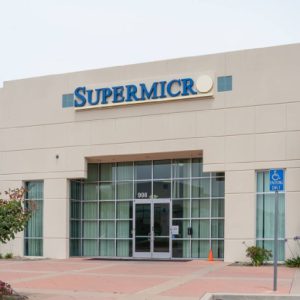Major vendors are keen to take a part of the emerging data sharing boom. In this article from IBM System User, Geoff Norman looks at exactly what the market leaders are supplying.
A prime consideration in maintaining production systems performance is the management of expanded memory. IBM mainframe performance is highly dependent on ‘data in memory’, that is the highest proportion of user activity is serviced by the mainframe memory to avoid delays from accessing a physical disk. Data has to be shared at the expanded storage level, which is still several steps away, or any attached platform must be empowered to instigate a disk write on any other platform, which is also one or two steps away. EMC, the mainframe disk storage market leader, has variants of its Symmetrix arrays for mainframes and open systems, including NT, offering a range of performance, capacity, and unit-cost options. For example, Symmetrix Network File Storage SNFS provides network attachment of Sun NFS-standard files to a variety of platforms and the Enterprise Storage Platform ESP provides partitioned, channel-attached storage for a wide range of server platforms, including System/390 and Novell. EMC also offers a variety of software products. They run on an applications processor to provide anywhere-to-anywhere data movement and some aspects of management. Unfortunately, only one – Symmetrix Remote Data Facility SRDF – takes data transfers away from the applications processor and its input/output channels, in providing local or remote dual copy. Symmetrix Multihost Transfer Facility SMTF carries out data transfers between MVS, OS/390, and Unix systems via the disk array, which at least takes loading off the communications network. EBCDIC-to-ASCII, extended binary code decimal interchange code, conversion is carried out on the Unix host.
Fast dump/restore
The company also offers mainframe-based management of open systems data through Fast Dump/Restore to Safeguard Open Storage FDRSOS developed by Innovation Data Processing. EMC does not offer data sharing, however, though the company has stated that it will make an announcement this year on the subject. IBM’s Storage Systems Division SSD arrived late in the mainframe disk array market, while EMC was winning market share. SSD is now working determinedly and investing heavily to make up lost ground, and RAMAC arrays have shown the solidity of IBM’s component engineering. The next significant step will come later this year with the announcement of CPSS – common parts subsystem, which brings further mainframe components to the open systems arena. There will be no cross-connection, however, and IBM does not expect to offer partitioning at any stage, preferring to go straight to data sharing, which will come with the Seastar product. Seastar was ‘non-announced’ in mid-1995. Unfortunately, non-announcement has been followed by non-appearance, though it is now expected to be unveiled towards the end of 1998 at the earliest. It will replace RAMAC 3, and is described as ‘equivalent to a Sysplex for disks’. The extent of IBM’s problems was highlighted in the middle of 1996, when it was obliged to buy technology and market share by taking over marketing of Storage Technology’s Iceberg and Kodiak disk products. Iceberg, renamed the RAMAC Virtual Array 2 RVA2 with IBM disks and updated microcode, has given sales a major fillip. IBM is talking to StorageTek about datasharing on Iceberg, but the product’s sophistication presents daunting technical challenges, say analysts. In terms of tape, IBM has announced Network Storage Manager – an interesting device that combines Magstar tapes, SSA disk, ADSM Adstar distributed storage manager software, and its own PowerPC processor. On the software front, IBM now has a considerable number of licenses of ADSM, which is bundled with RS/6000s. This drags non-mainframe data across networks to be managed by the mainframe, and tries to contain traffic by limiting transfers to data updates. The recovery times of such incrementally-backed-up files can be prohibitively lengthy, however, while the alternative of taking frequent complete file copies impacts the online performance of participating non- mainframe platforms. DFSMS data facility storage management subsystem is IBM’s other main data management software product. Rather than treating data dynamically on the basis of the business process accessing it, DFSMS places data in static classes. StorageTek’s dominance of the tape library market has given it more experience of data sharing devices than any other company and the deal with IBM has given it the funding necessary to develop an integrated, controller-driven storage subsystem, entitled the Enterprise Volume Management heading. In terms of disk, StorageTek’s pared down range includes the Open Storage Disk OSD supporting a wide range of platforms via SCSI small computer systems interface channels or the company’s own Enterprise Router Switch, which it acquired when it took over Network Systems. OSD is a shared device, but STK’s plans for controller functionality are far-reaching.
Force the rate of progress
And for both technical and business reasons, analysts believe it is the company most likely to force the rate of progress towards off-line data management. Of the other major storage vendors, Hitachi Data Systems announced device sharing for its 7700 disk array in early February, combining MVS, OS/390, access with attachment to the three leading Unix platforms. Below this first tier, there is a cluster of smaller suppliers, offering device sharing, or data sharing between similar platforms to differing extents. Analysts predict, however, that their market will be squeezed increasingly as the major suppliers turn their attention to heterogeneous environments. As a result one or two may prosper, and one or two may be taken over for their technology. Encore is the only supplier of data-sharing disk devices – the Infinity SP range. Termed a transparent access storage computer TASC, the SP is a commodity Unix box. System/390, Unix, Wintel and Macintosh platforms can be channel-attached to terabyte-plus arrays. Discriminating feature though it may be, Encore is unable to exploit the theoretical added value of data sharing, largely because of its small market share. This constrains it to compete on price. Infinity buyers are using the subsystem for specific applications that exploit data sharing. But there are limitations to the facilities offered by Encore. At the moment, only flat files are sharable, though this is set to change. A restriction is also normally imposed whereby only one platform can write to its files, with other platforms having read-only access. This restriction can be removed, but inter-process communication then becomes necessary to manage contention. In the enterprise context, the ability to attach data to System/390 is essential, and NT connectivity is also becoming a major factor, especially in the context of intranets, where Microsoft’s workgroup system shows signs of dominance. Wider use of large-scale intranets will extend the acceptance of data sharing, as will endorsement by EMC and IBM – Encore is awaiting those announcements from the market leaders.






